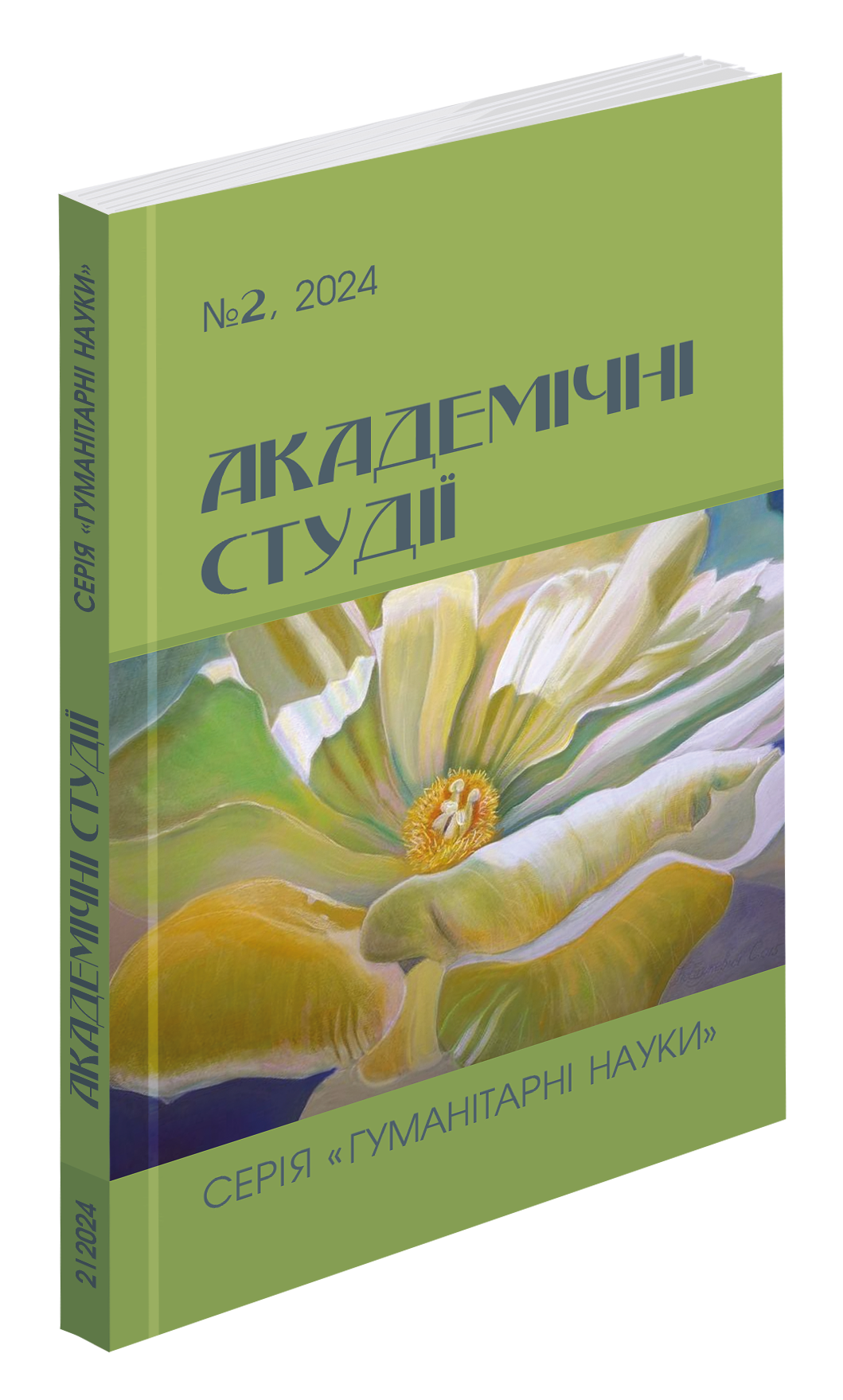Abstract
The article examines the origins and changes in the literary reception of the concept of «motif». The attentionis focused on the ambiguity of the definition of the concept of motive and the active search for a new theoretical synthesisin understanding its nature and functions in the story. Literary studies integrate the understanding of this concept into modern linguistics in order to emphasise the motif in all its manifestations. The article analyses the works on the study of the term in the field of cultural anthropology, folklore studies and literary studies by a number of prominent foreign and Ukrainian scholars. The existing classifications of motives differ significantly not only in their approaches and content, but also in the degree of elaboration and validity. The motif is considered in the context of plot/plot connections and as a side theme, a synonym of a theme or a figurative embodiment. The most common variants of the concept as a recurring element in the traditions of a cultural community and stereotypical narrative sequences whose identity is certain are indicated. The dominant systems of motifs at each stage of the development of literature from ancient literature to postmodernism are retrospectively reviewed. Attention is focused on distinguishing between the main components of the use of this term in literary studies: motive as a reason, motive as a narrative unit and motive as a thematic unit. the study of the classification of motives provides new directions for the analysis of specific literary phenomena. The author argues that it is relevant and necessary for domestic research in the field of folklore studies, literature studies, and art studies in general to get rid of the option of total focus on the achievements of the Russian school of literary studies in the study of the concept of «motif», which was typical for Ukrainian scientific research in recent decades. It is determined that a general overview of the development of the theory of motive gives grounds to say that the ideas and approaches of past researchers remain relevant to modern literary studies.
References
Білоус П. В. (2009). Вступ до літературознавства. Теорія літератури. Психологія літературної творчості.
Житомир : Рута. 336 с. URL: https://chtyvo.org.ua/authors/Bilous_Petro/ (дата звернення: 24.11.2023).
Будний В., Ільницький М. (2008). Порівняльне літературознавство. Київ : Видавничий дім «Києво-Моги-
лянська академія». 430 с.
Галич О. А., Назарець В. М., Васильєв Є. М. (2001). Теорія літератури. Київ : Либідь. 488с. URL:
https://ukrlit.net/info/theory/index.html (дата звернення: 20.02.2024).
Заоборна М. (2020). Мотив як інтердисциплінарний феномен та філологічна проблема. Studia methodologica.
№ 50. С. 34 – 45.
Кушнірова Т. В. (2004). Мотив як літературознавча категорія: ознаки і типологія. Вісник Полтавського
державного педагогічного університету ім. В. Г. Короленка. Полтава. Вип. 1(34). С. 3–11.
Лексикон загального та порівняльного літературознавства (2001). / голова ред. А. Волков. Чернівці : Золоті
литаври. 634 с.
Літературознавчий словник-довідник (2007). / ред.: Р. Т. Гром’як, Ю. І. Ковалів, В. І. Теремко. Київ : Ака-
демія. 751 с. URL: http://irbis-nbuv.gov.ua/ ulib/item/UKR0001094 (дата звернення: 07.11.2023).
Моклиця М. В. (2011). Вступ до літературознавства. Луцьк : ВНУ імені Лесі Українки. 468 с.
Тимченко А. (2010). Структура мотиву: до питання теоретичного осмислення. Літературознавчі обрії.
Праці молодих учених. Київ : Інститут літератури ім. Т. Г. Шевченка НАН України. С. 5–8.
Aarne A. (1961). The Types of the Folktale: A Classification and Bibliography. (1910). Helsinki : The Finnish
Academy of Science and Letters. 588 р.
Abbott H. P. (2008). The Cambridge Introduction to Narrative. Second Edition. Cambridge: Cambridge University
Press. 237 p. URL: https://www.academia.edu/108672247/ (дата звернення: 10.11.2023).
Christensen A. (1925). Motif et thème. Plan d’un dictionnaire des motifs de contes populaires, de légendes et de
fables, in Folklore Fellows Communications, 59. 5 p. URL: https://search.worldcat.org/title/ (дата звернення: 10.11.2023).
Daemmrich H. S. (1985). Themes and Motifs in Literature: Approaches: Trends: Definition. The German Quarterly,
(4). Pp. 566 – 575. URL: https://doi.org/10.2307/406945 (дата звернення: 09.11.2023).
Desrosiers-Bonin D. (2005). / Motif; Motive. Ditl dictionnaire international des termes littéraires. URL:
https://www.academia.edu/9457285/MOTIF (дата звернення: 23.11.2023).
Doležel L. (1972). From Motifemes to Motifs. Poetics 4. P. 55−90.
Doležel L. (1985). Semantyka narracji. Pamiętnik Literacki : czasopismo kwartalne poświęcone historii i krytyce
literatury polskiej L X X V I. z. 2. Pp. 289–310.
Freedman W. (1971). The Literary Motif: A Definition and Evaluation. A Forum on Fiction, 4 (2). Pp. 123–131.
URL: https://doi.org/10.2307/1345147 (дата звернення: 09.11.2023).
Frenzel E. (1980). Motive der Weltliteratur: Ein Lexikon dichtungsgeschichtlicher Langsschnitte. Stuttgart. 188 р.
Longrée D. & Мellet S. (2018). Towards a topological grammar of genres and styles: a way to combine paradigmatic
quantitative analysis with a syntagmatic approach. URL:https://www.researchgate.net/publication/ (дата звер-
нення: 10.11.2023).
Prince G. (2003). A Dictionary of Narratology. Revised Edition. Lincoln: University of Nebraska Press. 126 p.
Thompson S. (1946). The Folktale. Holt, Rinehart and Winston, Inc. 510 p.
Sperber H., Spitzer L. (1918). Motiv und Wort Studien zur Literatur und Sprachpsychologie O.R. Reisland. 123 p.
Vincensini J. (2000). Motifs et thèmes du récit médiéval. Paris: Nathan. 154 p.

